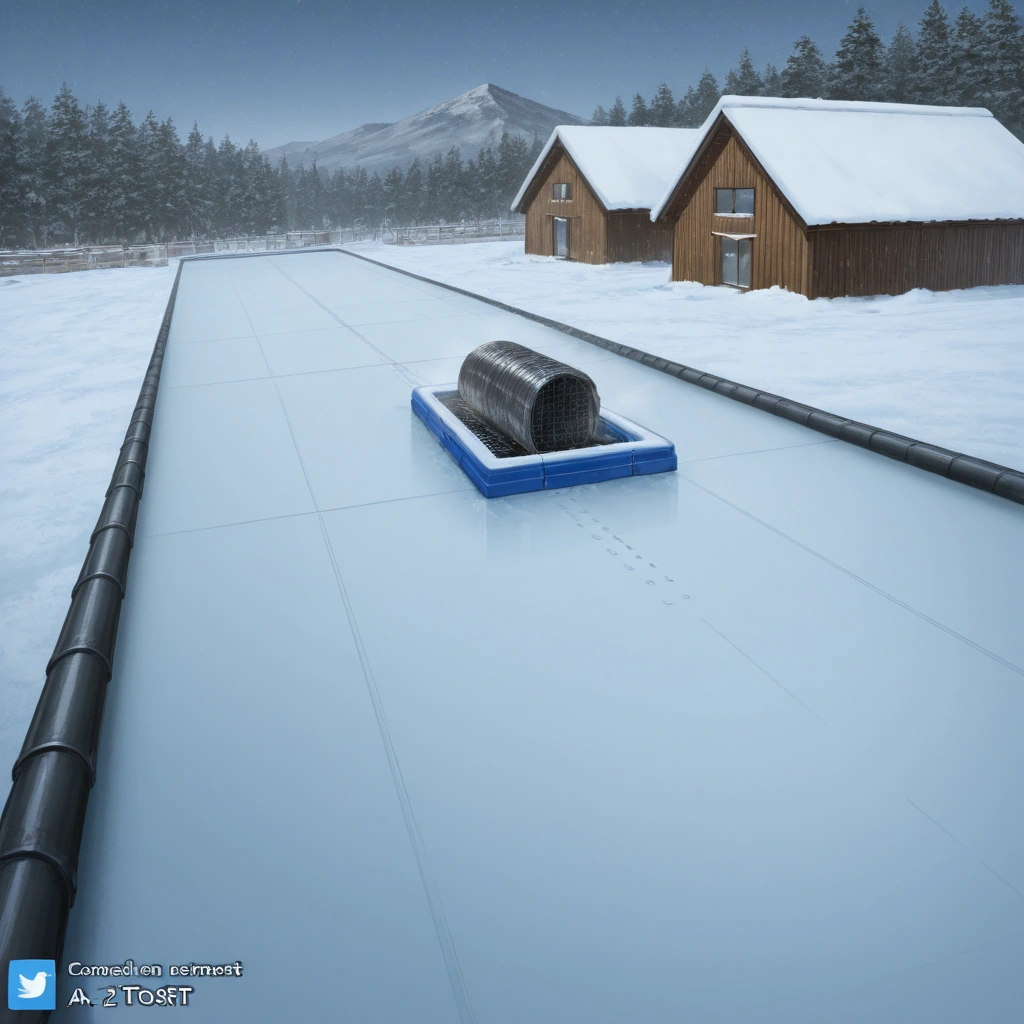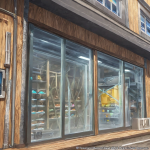Asphalt Shingles vs. Metal Roofing: A 2025 Cost-Benefit Analysis for Snow-Prone Homes
The Winter Fortress: Roofing Choices for a New Era
For homeowners in snow-laden states like Colorado, Minnesota, and Vermont, the roof over their heads isn’t just shelter; it’s a critical defense against the elements, a bulwark against blizzards and the insidious creep of ice dams. As we approach 2025, the choice between asphalt shingles and metal roofing demands a fresh look, weighing not just upfront costs but long-term performance and resilience. This analysis delves into the latest advancements and considerations for homeowners facing the annual onslaught of winter, examining how roofing technology has evolved to meet the challenges of extreme weather.
Factors such as roof pitch and attic insulation play crucial roles in mitigating snow load and preventing ice dam formation, impacting the overall roofing cost and maintenance requirements. This section sets the stage for a detailed comparison, arming homeowners with the knowledge to make informed decisions about their snow-prone roofing needs. The escalating frequency of severe winter storms necessitates a reassessment of traditional roofing materials. Asphalt shingles, while historically popular due to their lower initial roofing cost, may prove less economical in the long run in regions with heavy snowfall.
Their susceptibility to damage from freeze-thaw cycles and the weight of accumulated snow can lead to premature degradation and increased roofing maintenance. Conversely, metal roofing, particularly steel and aluminum alloys, offers superior durability and snow-shedding capabilities. Case studies from Colorado roofing projects demonstrate that metal roofs can withstand significantly higher snow loads compared to asphalt shingles, reducing the risk of structural damage and extending the roofing lifespan. Furthermore, the evolving landscape of roofing materials includes advancements in coatings and installation techniques designed to enhance snow and ice resistance.
For instance, specialized coatings applied to metal roofing can minimize snow adhesion, facilitating quicker and more efficient snow removal. Improved attic insulation, coupled with proper ventilation, helps regulate roof temperature, reducing the likelihood of ice dam formation, a significant concern in Minnesota roofing and Vermont roofing scenarios. The 2025 roofing market is witnessing a surge in demand for solutions that prioritize both energy efficiency and resilience, prompting manufacturers to innovate and offer products tailored to the unique challenges of snow-prone roofing.
Snow Load Showdown: Metal vs. Asphalt Strength
The primary concern in snow-prone regions, particularly for homeowners in states like Colorado, Minnesota, and Vermont, is the roof’s capacity to endure substantial snow load. Metal roofing systems, especially those constructed from steel or aluminum alloys, demonstrate a superior strength-to-weight ratio compared to asphalt shingles. This inherent characteristic allows metal roofs to withstand significantly heavier snow accumulations without succumbing to structural compromise. The specific snow load capacity is influenced by factors such as the roofing material’s gauge, the roof pitch, and the underlying support structure.
Engineering data consistently shows that metal roofing can handle snow loads exceeding 100 pounds per square foot (psf), whereas aged asphalt shingles may begin to exhibit signs of stress and potential failure at considerably lower loads. Furthermore, the smooth surface of metal facilitates snow shedding, reducing the sustained load and mitigating the risk of collapse, a critical consideration for snow-prone roofing. Asphalt shingles, while providing adequate protection in milder climates, are more vulnerable to the detrimental effects of extreme snow loads and freeze-thaw cycles.
Over time, asphalt shingles can become brittle and susceptible to cracking, particularly as the granules that protect the underlying asphalt layer degrade. This degradation is accelerated by repeated exposure to moisture and temperature fluctuations, common in snow-prone regions. The weight of accumulated snow, combined with the expansion and contraction of ice within the shingle matrix, can lead to premature failure and the need for costly repairs or even complete roof replacement. Therefore, while the initial roofing cost of asphalt shingles may be lower, the long-term cost implications in areas with heavy snowfall can be significantly higher due to increased roofing maintenance and a shorter roofing lifespan.
The International Building Code (IBC) establishes minimum snow load requirements that vary based on geographic location and other factors. However, local conditions, such as microclimates and atypical snowfall patterns, often necessitate exceeding these minimum standards to ensure adequate protection. Consulting with a qualified structural engineer or roofing contractor experienced in snow-prone roofing is crucial to determine the appropriate snow load capacity for a specific building and location. Recent advancements in metal roofing technology include enhanced seam designs that provide superior water tightness and thicker gauge materials that further increase snow load capacity.
Moreover, improvements in attic insulation play a crucial role in preventing heat loss from the building, which can contribute to ice dam formation and exacerbate the effects of snow load on the roof structure. Selecting the right roofing materials and ensuring proper installation are vital steps in safeguarding homes against the challenges posed by heavy snowfall and ice accumulation, ultimately impacting the overall roofing cost over the lifespan of the roof. The decision between asphalt shingles and metal roofing in 2025 hinges not only on upfront expenses but also on a comprehensive assessment of long-term performance and resilience against the elements.
Ice Dam Defense: Prevention is Key
Ice dams, those insidious ridges of ice that form at the edge of roofs, are a major headache for homeowners in cold climates, particularly in states like Colorado, Minnesota, and Vermont. These formations occur when melting snow refreezes at the roof’s edge, creating a barrier that prevents further meltwater from draining. This can cause water to back up under roofing materials, including asphalt shingles, leading to leaks, damaged insulation, and costly interior repairs. Addressing ice dam prevention is a critical aspect of roofing maintenance for snow-prone roofing, and understanding the nuances of different roofing materials is paramount for making informed decisions.
The severity of ice dam formation is also influenced by factors such as roof pitch and the effectiveness of attic insulation. Proper ventilation and sealing of air leaks in the attic are crucial first steps in mitigating ice dam risk, regardless of the roofing material chosen. Metal roofing, due to its inherent properties, offers several advantages in the fight against ice dams compared to asphalt shingles. The smooth, non-porous surface of metal allows snow to slide off more easily, reducing the accumulation that fuels ice dam formation.
Furthermore, metal’s higher thermal conductivity promotes more uniform heat distribution across the roof surface, minimizing temperature variations that contribute to the freeze-thaw cycle. This is especially important as we approach 2025 roofing technology, where energy efficiency and climate resilience are increasingly prioritized. While both metal roofing and asphalt shingles benefit from proper attic insulation, metal’s ability to shed snow more readily provides a significant advantage in preventing ice dams and reducing the risk of water damage.
However, it’s crucial to acknowledge that no roofing material is entirely immune to ice dam formation. Even with metal roofing, inadequate attic insulation or poor ventilation can still create conditions conducive to ice damming. Therefore, a comprehensive approach to ice dam prevention is essential, combining appropriate roofing materials with proactive measures to manage heat loss and snow accumulation. Emerging roofing technology includes self-regulating heating cables that can be integrated into metal roofing systems, providing an added layer of protection against ice dam formation, albeit at an increased roofing cost. Homeowners should carefully weigh the initial investment against the potential long-term savings in terms of reduced roofing maintenance and repair costs. Considering the roofing lifespan and potential for damage from snow load and ice dams is a key aspect of a thorough roofing cost analysis when evaluating asphalt shingles versus metal roofing.
The Long Game: Durability and Lifespan Comparison
Durability and lifespan are critical factors in the long-term cost equation for snow-prone roofing. Metal roofing systems typically boast a service life of 40-70 years, a stark contrast to asphalt shingles, which generally require replacement every 15-30 years. This extended roofing lifespan translates to significantly lower lifecycle costs, offsetting the higher initial investment often associated with metal. Independent studies, such as those conducted by the Metal Roofing Alliance, consistently demonstrate the long-term economic advantages of metal, especially when factoring in reduced roofing maintenance and potential increases in property value.
For homeowners in regions like Colorado, Minnesota, and Vermont, where extreme weather conditions prevail, this longevity provides a crucial buffer against frequent and costly repairs or replacements due to heavy snow load and ice dams. The material science behind metal’s resilience lies in its inherent resistance to degradation from UV exposure, freeze-thaw cycles, and physical impact, ensuring a robust defense against the elements. Metal’s superior performance stems from its inherent material properties and construction. Unlike asphalt shingles, which are susceptible to granule loss, cracking, and algae growth (particularly in humid climates), metal roofing exhibits exceptional resistance to weathering and impact.
The smooth, non-porous surface of metal also minimizes the adhesion of snow and ice, reducing the risk of ice dam formation and associated water damage. Furthermore, metal roofing’s fire resistance provides an added layer of protection, potentially lowering insurance premiums. The choice of metal roofing material also plays a significant role; for example, steel offers exceptional strength, while aluminum provides superior corrosion resistance. Proper roof pitch and adequate attic insulation are crucial complements to any roofing system, further enhancing its ability to withstand snow load and prevent ice dams, regardless of the roofing materials chosen.
While recent advancements in asphalt shingle technology, such as the incorporation of modified asphalt and enhanced UV protection, have undeniably improved their durability, they still fall short of metal’s inherent longevity and resistance to extreme conditions. The increased use of polymers in asphalt shingles aims to improve flexibility and reduce cracking, but these materials can still degrade over time, particularly under constant exposure to harsh weather. Moreover, roofing maintenance requirements differ substantially between the two options.
Metal roofs typically require minimal upkeep, primarily consisting of occasional cleaning to remove debris, while asphalt shingles may necessitate periodic cleaning to combat algae growth and more frequent repairs to address granule loss or cracking. Considering the 2025 roofing landscape, the long-term value proposition of metal roofing in snow-prone areas becomes increasingly compelling, particularly when factoring in the rising costs of labor and materials associated with roofing replacement and repair. This makes metal roofing a sound investment for homeowners seeking a durable, low-maintenance, and long-lasting roofing solution.
The Bottom Line: A 2025 Cost-Benefit Breakdown
The cost-benefit analysis extends beyond the initial installation price. While asphalt shingles generally have a lower upfront cost, metal roofing’s longer lifespan, reduced roofing maintenance, and potential energy savings (due to its reflective properties) can make it a more economical choice in the long run, particularly in snow-prone roofing environments. Consider the cost of replacement, repairs, and potential damage from leaks or ice dams when evaluating the total cost of ownership. Furthermore, roof pitch and attic insulation play a crucial role.
Steeper roof pitches facilitate snow shedding, reducing the risk of snow load and ice damming. Adequate attic insulation minimizes heat loss, further mitigating ice dam formation. Homeowners should consult with roofing professionals to assess their specific needs and budget, considering factors like climate severity, roof complexity, and aesthetic preferences. Government incentives and tax credits for energy-efficient roofing materials can also influence the final cost. To illustrate, consider a homeowner in Colorado roofing market facing frequent heavy snowfalls.
While asphalt shingles might initially save them a few thousand dollars on installation, they could face replacement within 20 years due to weathering and snow load stress. The recurring roofing cost associated with asphalt, coupled with potential repairs from ice dams, could easily surpass the initial price difference. Conversely, a metal roofing system, though more expensive upfront, could last 50-70 years, offering superior protection against snow load and ice dams, and potentially lowering long-term expenses.
This is especially true as roofing technology continues to advance, improving the durability and energy efficiency of metal roofing materials. In states like Minnesota roofing market and Vermont roofing market, where winters are harsh and prolonged, the benefits of metal roofing become even more pronounced. The increased reflectivity of metal can lead to significant energy savings during the summer months, reducing cooling costs. Moreover, the smooth surface of metal allows for easier snow shedding, minimizing the risk of ice dam formation and the associated water damage.
When evaluating roofing lifespan, it’s also crucial to factor in the environmental impact. Metal roofing is often made from recycled materials and is fully recyclable at the end of its lifespan, making it a more sustainable choice compared to asphalt shingles, which contribute to landfill waste. Homeowners in these snow-prone roofing regions should carefully weigh these factors when making their roofing decisions for 2025 roofing. Ultimately, the optimal choice between asphalt shingles and metal roofing depends on a homeowner’s individual circumstances and priorities.
A comprehensive cost-benefit analysis should include not only the initial roofing cost but also the projected lifespan, maintenance expenses, energy savings, potential repair costs, and environmental impact. Exploring different roofing materials and understanding their specific properties is essential. For instance, some asphalt shingles are designed with enhanced snow and ice resistance, while some metal roofing systems are coated with special finishes to improve their reflectivity and corrosion resistance. Consulting with experienced roofing contractors and considering government incentives can help homeowners make informed decisions that align with their needs and budget.
Future Trends: The Evolution of Snow-Resistant Roofing
Experts predict a continued shift towards more durable and sustainable roofing solutions in snow-prone regions. Metal roofing is poised to gain further market share as homeowners increasingly prioritize long-term value and resilience, particularly in states like Colorado, Minnesota, and Vermont where severe winter weather is the norm. Advancements in materials science, such as the development of even stronger and more corrosion-resistant alloys like Galvalume steel and specialized aluminum blends, will further enhance metal’s performance against heavy snow load and persistent ice dam formation.
Simultaneously, asphalt shingle manufacturers are investing in technologies to improve their products’ durability and weather resistance, focusing on enhanced granule adhesion to prevent premature wear and modified bitumen formulations for increased flexibility in freezing temperatures. These advancements aim to extend the roofing lifespan of asphalt shingles and reduce roofing maintenance costs, but questions remain about their long-term effectiveness compared to metal in harsh climates. The roofing cost comparison will therefore remain a critical factor for homeowners.
Future trends may include the integration of smart technologies, such as sensors that monitor snow load and ice dam formation, providing homeowners with real-time data and proactive alerts. Imagine a system that detects excessive snow accumulation on a roof with a low roof pitch and automatically alerts the homeowner via a smartphone app, allowing them to take preventative action before structural damage occurs. Furthermore, advancements in attic insulation technology will play a crucial role in minimizing heat loss through the roof, reducing the likelihood of ice dam formation in the first place.
These integrated systems will not only enhance safety but also provide valuable data for optimizing energy efficiency and extending the lifespan of roofing materials, whether asphalt shingles or metal roofing. Moreover, the environmental impact of roofing materials will become an increasingly important consideration. The recyclability of metal roofing gives it an edge in sustainability compared to asphalt shingles, which often end up in landfills. Life cycle assessments, which evaluate the environmental footprint of a product from manufacturing to disposal, will likely play a larger role in informing roofing material choices.
Homeowners may also explore options like cool roofs, which utilize reflective coatings to reduce heat absorption and lower energy consumption, irrespective of whether they choose asphalt shingles or metal roofing. Ultimately, the optimal roofing choice depends on a careful evaluation of individual needs, budget constraints, and long-term goals. As the climate continues to evolve, investing in a robust and reliable roofing system will become increasingly critical for homeowners in snow-prone regions, demanding a holistic approach that considers not only roofing materials but also installation techniques, maintenance practices, and technological integrations. As we approach 2025 roofing decisions will become even more critical.


